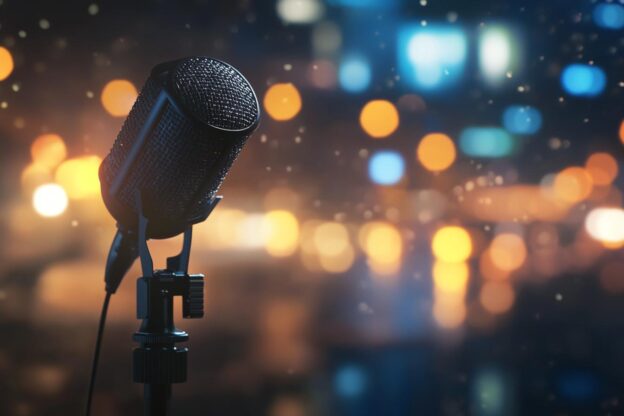Examining the world of radio news requires more than just tuning in to your favorite station. It’s about understanding the intricate dance between information delivery and audience engagement. Think about the impact of a well-crafted soundbite, the power of a compelling voice, and the ability to weave a narrative that holds listeners captive. How does a news organization choose which stories to highlight, and how do they shape the narrative for maximum impact? The answers to these questions lie in the art of radio news production, a process that blends journalism with storytelling to inform and captivate audiences.
Beyond the news itself, we can explore the evolution of radio as a medium. From its early days as a novelty to its current role as a trusted source of information, radio has adapted and thrived. We’ve seen the rise and fall of various formats, witnessed the impact of technological advancements, and observed how radio has become a platform for diverse voices and perspectives. What will the future hold for radio news? Will it continue to evolve alongside technology, or will it find new ways to engage audiences in a world saturated with information? These are questions worth considering as we navigate the ever-changing landscape of media consumption.

Radio News Examining
1. Radio News Examining
Radio news examining is a crucial aspect of media literacy, empowering listeners to critically analyze information presented on the airwaves. This process involves actively listening to news broadcasts, identifying key facts, and evaluating the credibility of sources. It also entails recognizing potential biases, understanding different perspectives, and considering the context in which news is presented. By diligently examining radio news, individuals can develop a more discerning approach to consuming media, ensuring they are well-informed and can make informed decisions.
Beyond simply listening, radio news examining encourages listeners to ask questions and seek additional information. For example, one might investigate the source of a statistic or explore alternative perspectives on a story. Radio news examining is a dynamic process that encourages critical thinking, fostering a more informed and engaged audience. It empowers listeners to not simply consume information passively but to actively engage with it, ultimately leading to a deeper understanding of current events and the world around them.
2. Analyzing Radio News Content
Analyzing radio news content helps you understand the messages being conveyed and the strategies used to deliver them. You can examine the structure of the news report, including the order of information, the use of sound bites, and the choice of music and sound effects. Additionally, you can analyze the language used by the reporters and the tone of their voices to understand the overall message and the intended audience. By considering these factors, you can gain a deeper understanding of the news being presented and how it might influence listeners.
Beyond the technical aspects, analyzing radio news content also involves considering the context in which the news is presented. This includes the time of day, the target audience, and the overall news cycle. By understanding the context, you can better interpret the messages being conveyed and the potential impact on listeners. For example, a news report about a political event might be framed differently depending on the time of day and the audience it is intended for. Therefore, considering the context is crucial for a thorough analysis of radio news content.
3. Evaluating News Accuracy and Bias
In today’s world, where news travels at lightning speed, it’s more crucial than ever to be a discerning consumer of information. Before accepting a news story at face value, it’s essential to scrutinize its accuracy and identify any potential biases. Look for credible sources, such as established news organizations with a history of journalistic integrity. Investigate the author’s background and any potential conflicts of interest. Cross-reference information with multiple sources to get a more complete picture of the story.
Recognizing bias is also crucial. Bias can manifest in various ways, including the selection of facts presented, the tone and language used, and the framing of the story. Be mindful of headlines, which often aim to grab attention and may not accurately reflect the content. Remember that every news source has a perspective, and understanding that perspective is vital for making informed judgments about the information you consume.
4. Examining Reporting Styles and Techniques
Radio news reporting styles and techniques can vary widely, depending on the type of story, the target audience, and the station’s overall brand. Some reporters favor a straightforward, factual approach, delivering information in a clear and concise manner. Others might use a more conversational style, incorporating personal anecdotes or opinions to make the story more engaging. In addition, reporters may employ different techniques to enhance their stories, such as sound effects, interviews, and music.
Beyond the style, the choice of techniques is crucial to effectively delivering information on radio. Reporters frequently use interviews to provide context and perspectives from experts or those directly affected by the story. Sound effects can transport listeners to the scene, immersing them in the experience. Music can be used to set the mood or to transition between segments. By experimenting with various styles and techniques, radio reporters can make their stories more compelling and memorable for their audience.
5. Assessing Audience Impact and Reception
After your radio news segment airs, it’s crucial to evaluate how your audience received it. You can measure the impact by gathering data on listenership, social media engagement, and website traffic. By analyzing listener feedback, you gain valuable insights into what resonates with your audience and what doesn’t. This data helps you refine your reporting style and content choices for future broadcasts.
Furthermore, you can gauge audience reception by observing how your story is discussed online. Social media platforms like Twitter and Facebook provide a platform for people to share their thoughts and reactions to your reporting. By monitoring these conversations, you can understand the public’s perspective on the news and identify any areas where your coverage could be improved. This feedback loop allows you to stay connected with your audience and ensure your reporting remains relevant and impactful.
Conclusions
So, there you have it! We’ve delved into the world of radio news, exploring how it works and how we can understand it better. We’ve learned how to dissect radio news broadcasts, analyzing the content and spotting any potential biases. We’ve even taken a look at how reporters present the news, examining their techniques and how they influence listeners. And lastly, we’ve considered the impact of radio news on audiences, thinking about how people receive and react to the information they hear. By understanding these things, we become more informed listeners and can engage with the world around us in a more critical and thoughtful way.
Remember, radio news is powerful, and it’s important to approach it with a curious mind. By being aware of the different factors involved, we can make informed decisions about what we hear and how we interpret it. So, keep listening, keep questioning, and keep your ears open to the world!
